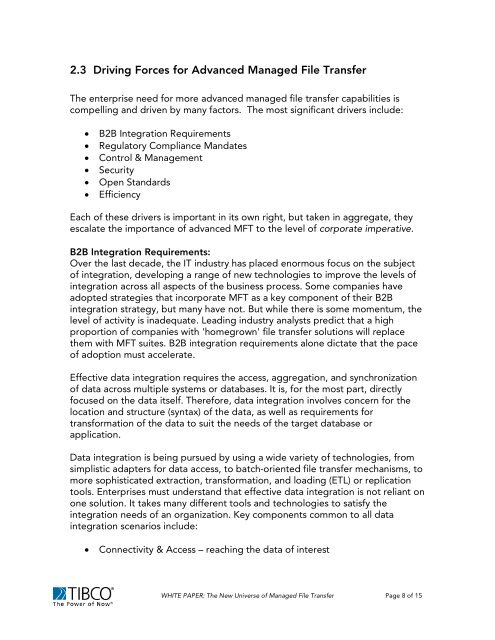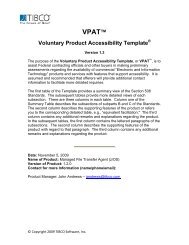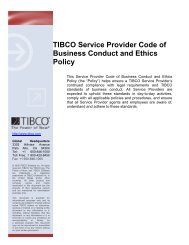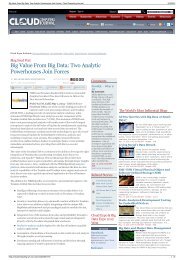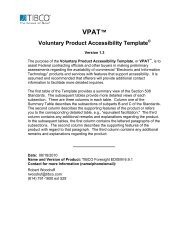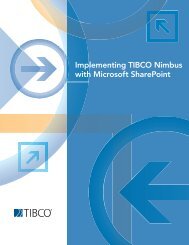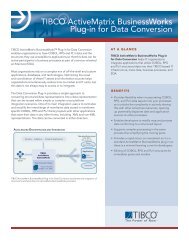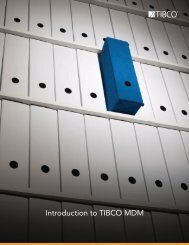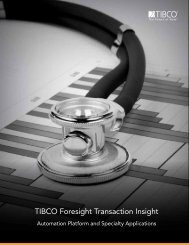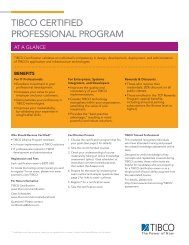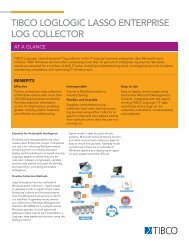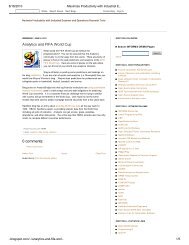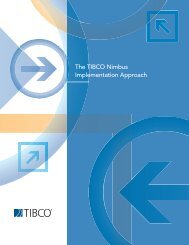CyberFusion Integration Suite - Tibco
CyberFusion Integration Suite - Tibco
CyberFusion Integration Suite - Tibco
You also want an ePaper? Increase the reach of your titles
YUMPU automatically turns print PDFs into web optimized ePapers that Google loves.
2.3 Driving Forces for Advanced Managed File Transfer<br />
The enterprise need for more advanced managed file transfer capabilities is<br />
compelling and driven by many factors. The most significant drivers include:<br />
• B2B <strong>Integration</strong> Requirements<br />
• Regulatory Compliance Mandates<br />
• Control & Management<br />
• Security<br />
• Open Standards<br />
• Efficiency<br />
Each of these drivers is important in its own right, but taken in aggregate, they<br />
escalate the importance of advanced MFT to the level of corporate imperative.<br />
B2B <strong>Integration</strong> Requirements:<br />
Over the last decade, the IT industry has placed enormous focus on the subject<br />
of integration, developing a range of new technologies to improve the levels of<br />
integration across all aspects of the business process. Some companies have<br />
adopted strategies that incorporate MFT as a key component of their B2B<br />
integration strategy, but many have not. But while there is some momentum, the<br />
level of activity is inadequate. Leading industry analysts predict that a high<br />
proportion of companies with 'homegrown' file transfer solutions will replace<br />
them with MFT suites. B2B integration requirements alone dictate that the pace<br />
of adoption must accelerate.<br />
Effective data integration requires the access, aggregation, and synchronization<br />
of data across multiple systems or databases. It is, for the most part, directly<br />
focused on the data itself. Therefore, data integration involves concern for the<br />
location and structure (syntax) of the data, as well as requirements for<br />
transformation of the data to suit the needs of the target database or<br />
application.<br />
Data integration is being pursued by using a wide variety of technologies, from<br />
simplistic adapters for data access, to batch-oriented file transfer mechanisms, to<br />
more sophisticated extraction, transformation, and loading (ETL) or replication<br />
tools. Enterprises must understand that effective data integration is not reliant on<br />
one solution. It takes many different tools and technologies to satisfy the<br />
integration needs of an organization. Key components common to all data<br />
integration scenarios include:<br />
• Connectivity & Access – reaching the data of interest<br />
WHITE PAPER: The New Universe of Managed File Transfer Page 8 of 15


